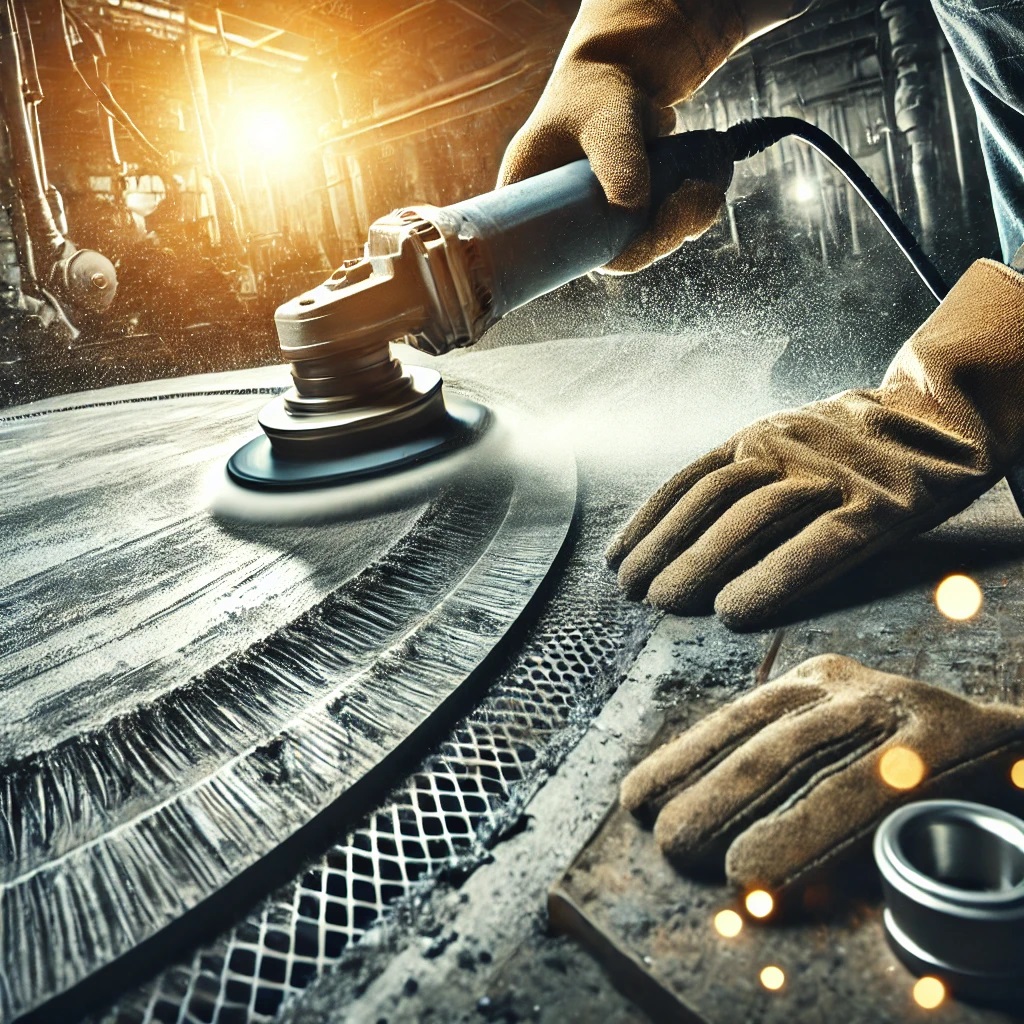
Outdoor concrete surfaces require proper preparation before applying coatings, sealers, or overlays to ensure long-lasting durability and protection. Whether you’re looking to enhance aesthetics, increase weather resistance, or prepare for future construction, choosing the concrete surface preparation method is crucial. Here’s a guide to the most effective surface preparation methods for outdoor concrete surfaces.
1. Pressure Washing
Pressure washing is an essential first step for cleaning concrete surfaces. High-pressure water can remove dirt, debris, algae, and loose particles. This method is particularly effective for removing:
- Dust and dirt build-up.
- Stains caused by oil, grease, or mildew.
- Loose coatings or peeling paint.
Pros:
- Efficient at cleaning large areas.
- Non-abrasive method.
Cons:
- Does not remove tough stains or coatings.
Best For:
- General cleaning and light preparation before further treatments.
2. Acid Etching
Acid etching involves applying a mild acidic solution, such as muriatic acid, to the concrete surface. This method opens the pores of the concrete, making it suitable for coatings like epoxy or sealers.
Pros:
- Inexpensive and easy to apply.
- Opens pores for better coating adhesion.
Cons:
- Hazardous fumes and potential health risks.
- Requires thorough rinsing to remove residual acid.
Best For:
- Preparing concrete for light coatings like sealers or thin paint layers.
3. Grinding
Concrete grinding uses a mechanical grinder equipped with abrasive tools to smoothen and level the surface. This method is highly effective in removing:
- Old coatings or sealers.
- Surface imperfections like bumps and uneven patches.
Pros:
- Ensures a smooth and level surface.
- Suitable for large-scale surface preparation.
Cons:
- Creates dust if not done with a vacuum system.
Best For:
- Removing stubborn coatings.
- Preparing for decorative finishes or overlays.
4. Shot Blasting
Shot blasting is a mechanical method that uses steel shot particles propelled at high velocity to strip coatings and roughen the surface. It is ideal for preparing concrete for heavy-duty coatings and industrial applications.
Pros:
- Effective at removing thick coatings.
- Provides a rough texture for superior adhesion.
Cons:
- Requires specialized equipment.
- Not suitable for delicate or decorative surfaces.
Best For:
- Industrial settings requiring high durability.
5. Scarifying
Scarifying involves using a machine with rotating cutting wheels to remove concrete layers. This method is excellent for removing tough coatings, adhesives, or heavy contamination on the concrete surface.
Pros:
- Ideal for heavily damaged or contaminated surfaces.
- Fast and efficient.
Cons:
- Can leave deep grooves in the surface.
- Requires a second step, like grinding, to smoothen the surface.
Best For:
- Deep surface removal and preparing for new overlays.
6. Sandblasting
Sandblasting involves spraying sand or other abrasive materials onto the concrete surface to remove coatings, paint, and grime. It leaves the surface rough and ready for new coatings.
Pros:
- Highly effective for detailed cleaning.
- Reaches hard-to-reach areas.
Cons:
- Creates significant dust and requires protective measures.
Best For:
- Detailed surface cleaning.
- Removing paint and tough coatings.
7. Concrete Planing
Concrete planing, also known as milling, removes surface material using rotating drums with carbide cutters. It’s ideal for reducing thickness, eliminating high spots, or removing heavy contamination.
Pros:
- Great for leveling uneven surfaces.
- Effective in removing several layers at once.
Cons:
- Leaves surface roughness.
- Often requires follow-up grinding for smooth finishes.
Best For:
- Removing damaged or cracked surface layers.
Key Considerations for Surface Preparation
- Surface Condition: Assess the current state of your concrete. Cracks, coatings, or heavy contamination will determine the most effective method.
- End Use: The surface preparation method should align with your project goals. For decorative finishes, opt for gentler methods like grinding, whereas industrial coatings may require shot blasting.
- Equipment: Specialized equipment such as grinders, scarifiers, and shot blasters may be necessary depending on your method.
- Environment: Choose methods that minimize dust and pollution in populated areas, such as wet grinding or shot blasting with dust collectors.
Conclusion
Choosing the right surface preparation method ensures the longevity and effectiveness of the final finish or coating. By considering the state of the concrete, the required durability, and the equipment available, you can select the most suitable approach for your project. Proper surface preparation is an investment that prevents future issues, enhances aesthetics, and improves performance in outdoor concrete surfaces.
FAQs
1. Why is surface preparation necessary for outdoor concrete?
Surface preparation removes contaminants and creates a clean, rough surface that ensures strong adhesion for coatings, sealers, or overlays.
2. Can I use multiple preparation methods?
Yes, combining methods like pressure washing followed by grinding or shot blasting can achieve a cleaner and more durable surface.
3. Is pressure washing enough for surface preparation?
Pressure washing is ideal for cleaning but may not be sufficient for removing tough coatings or deep stains. Pair it with another method like grinding for better results.
4. What is the best method for decorative concrete finishes?
Grinding is the preferred method for decorative finishes, as it smoothens the surface and ensures even application of stains or sealers.
5. How do I minimize dust when preparing concrete surfaces?
Use wet grinding, dust collection systems, or vacuums to minimize dust during preparation, especially in residential or populated areas.
6. Can surface preparation methods damage the concrete?
Some methods, like scarifying or planing, may leave grooves or roughness. Follow up with grinding or polishing to achieve a smooth finish.
